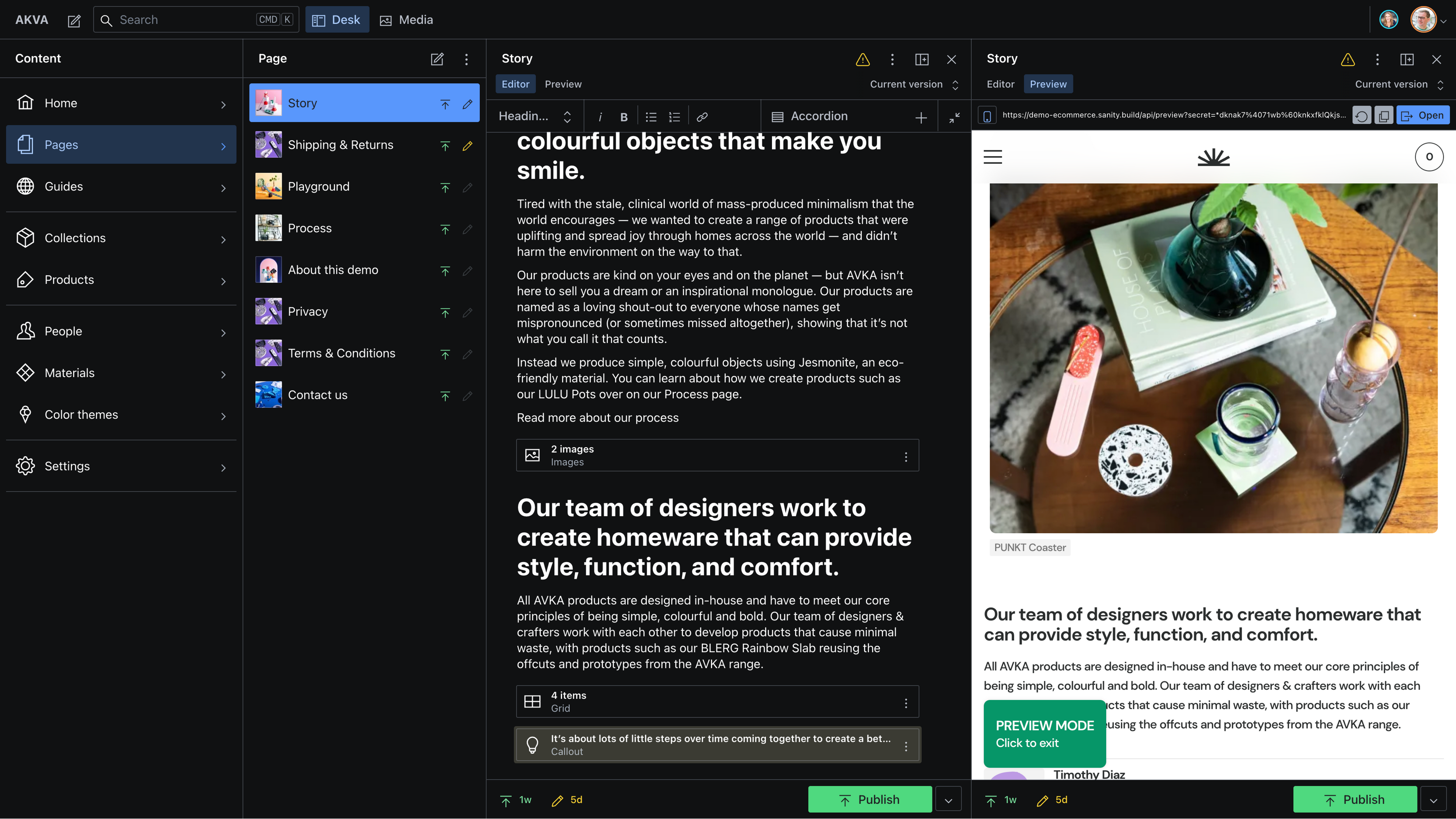Get Started | Docs | Website
The Sanity Composable Content Cloud lets teams create remarkable digital experiences at scale. Sanity Studio is an open-source, single-page application that is fast to set up and quick to configure. The Studio comes with a complete studio customization framework that lets you tailor the workspace as your needs grow.
Sanity hosts your content in a real-time, hosted data store called Content Lake. Get started with the free plan with generous bandwidth and hosting included and pay-as-you-go for overages.
Initiate a new project by running the following command:
npm create sanity@latest
# With other package managers:
yarn create sanity@latest
pnpm create sanity@latestGo here for a step-by-step guide on how to get up and running.
Check out the docs and plugins and start building.
Sanity Studio is an open-source real-time CMS, that you can customize with JavaScript and React.
- Efficient editing, instant UI for complex fields
- Responsive, works on narrow screens
- Plug-in architecture and custom components
- Style with your own branding
- Advanced block editor for structured content
- Use JavaScript to add field validations, organize documents, and set initial values
- Bring your own frontend, or whatever else you might need.
- Sweet APIs for reading, writing, importing, exporting, go back in time, and listening for updates.
- Secure, scalable and GDPR compliant.
- Zero config Graph Oriented Query Language (GROQ), and GraphQL API.
- Helpful and friendly developer community.
- Distribute from a single source of truth, in real-time.
- Unlock programmatic approaches to workflows and design.
- Upload images and transform them on demand.
- Query images for metadata like dominant colors, sizes, geo-location, and EXIF metadata.
- Rich text that can be serialized into any markup language.
- Follow @sanity_io on Twitter
- Subscribe to our blog by RSS
- Subscribe to our newsletter
- Join the developer community on Slack
We aim to be an inclusive, welcoming community for everyone. To make that explicit, we have a code of conduct that applies to communication around the project.
Found a bug, or want to contribute code? Pull requests and issues are most welcome. Read our contributing guidelines to learn how.
We're always looking to make Sanity Studio more accessible and user-friendly, and your contributions can make a big difference. Whether you're a seasoned developer or just starting out, helping with translations is a fantastic way to get involved.
If you're fluent in a language other than English, we'd love your help in reviewing and improving translations. Your expertise can greatly enhance the experience for users worldwide.
How to Contribute:
- Visit our sanity-io/locales repository and try out a locale you are fluent in.
- Have ideas for improvements? Submit a PR following the contributing guide.
- See if there are open PRs in languages you are fluent in and help review them.
Interested in playing a bigger role? You can ask to be added as a maintainer to oversee translations for specific languages, where you will be automatically added as a reviewer on PRs that involve your language. See the sanity-io/locales README for more.
Your contributions not only improve Sanity Studio but also bring together a diverse and global community of users. We appreciate every effort, big or small, and we can't wait to see what you bring to the table!
Sanity Studio is available under the MIT License











